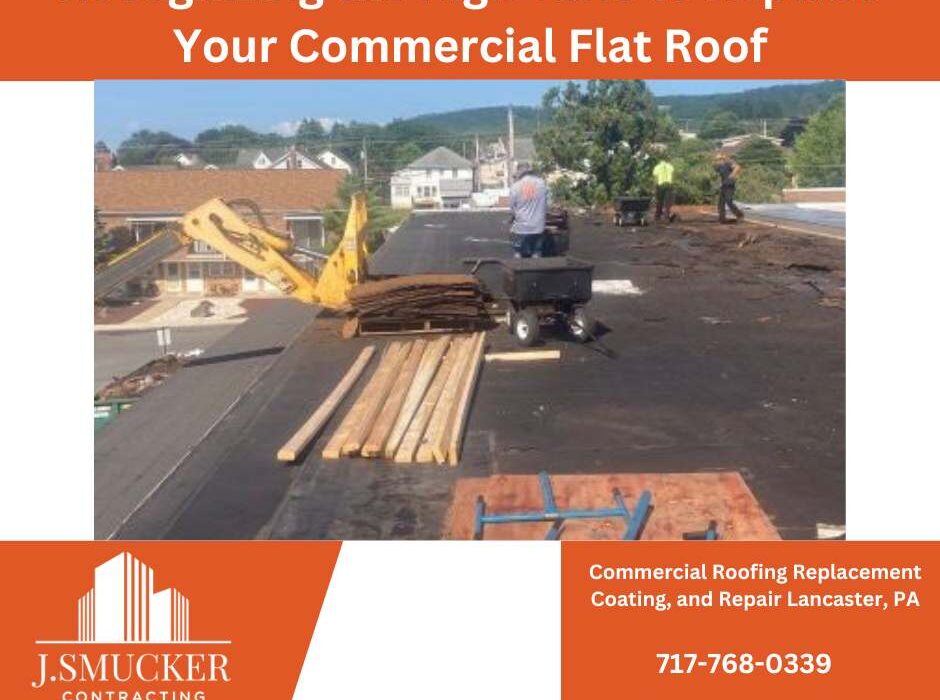- By admin
- Roof Replacement
- 0 Comment
Recognizing the Right Time to Replace Your Commercial Flat Roof
Ensuring that the roof over your commercial establishment remains in good shape is not only critical for the safety of the structure and the people inside, but it also plays a role in maintaining the property’s value. Flat roofs, prevalent in commercial settings, require specific considerations. Given that the majority of commercial structures adopt flat roofing due to its cost-efficiency and functionality, understanding the life cycle of these roofs is vital to your operation. One of the most important aspects of this understanding is recognizing when a replacement is due. This article delves deep into the signs that you need to look out for.
Here’s how to determine when it’s time for a replacement:
1. The Lifespan of Flat Roofs
Every roofing material has its expected lifespan, which serves as the first gauge to assess potential replacement. Commercial flat roofs, often constructed using EPDM, TPO, or built-up methods, typically last anywhere between 15 to 25 years. Factors affecting this lifespan include quality of installation, weather conditions, and maintenance frequency. When a roof is approaching the tail end of this range, it’s wise to begin assessments and consider replacements.
Remember, the longevity of a commercial roof dramatically depends on consistent upkeep and care. Proactive inspections and tackling minor problems early can significantly extend your roof’s life.
For more insights on the ideal commercial roofing materials for your structure, check out our earlier piece titled What is the Best Commercial Roofing Material, where we break down popular choices in the industry and their respective advantages and disadvantages.
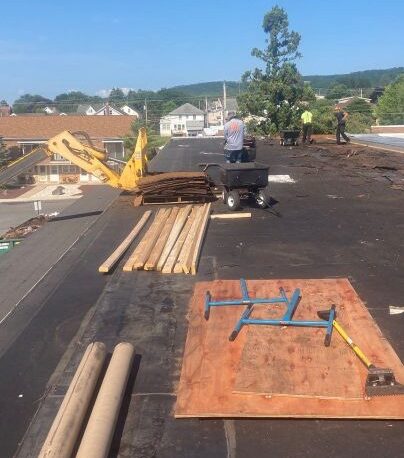
Roof replacement is a large undertaking, so consistent checkups and professional upkeep will ensure the life of your roof is extended as far as possible!
2. Persistent and Frequent Leaks
Minor leaks, when promptly addressed, are part and parcel of roof maintenance. However, when these become frequent, covering multiple areas, it’s an alarm bell. Persistent water infiltration is more than just a surface nuisance—it compromises insulation, increases energy costs, poses a risk for mold growth, and can damage the property’s structure. If the leaks are sprouting more often than they can be plugged, the underlayment might be compromised, necessitating a roof replacement.
Speaking of mold, if you’re getting dripped on inside your building and your roof is pretty old, you probably need a new one, and fast!
Mold isn’t just a pesky issue, but a major health hazard. Mold can trigger asthma attacks, and it’s not great for us to breathe in – and depending on the type of mold, can even be deadly. Even if you can’t see it, if you catch a whiff of something musty, that’s a sign of water sneaking in.
And if your ceiling tiles or drywall are looking a bit worse for wear, you’re probably dealing with some serious water leakage. Chances are, it’s time to give that roof a refresh.
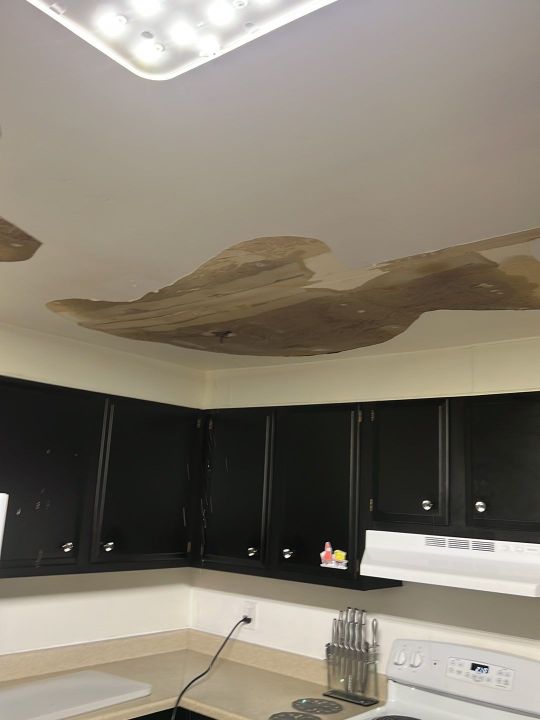
Interior leaks like the one pictured here are a sure sign that it's time to replace your commercial roof
3. Visible Surface Damage
A visual inspection can be incredibly revealing:
- Blistering: Small bubbles or blisters on the roof’s surface can indicate trapped moisture. Over time, these can burst, leading to leaks.
- Cracking or Splitting: As roofing materials age, they can become brittle, especially under fluctuating temperatures.
- Ponding Water: A good flat roof should have a slight slope to ensure water drainage. Ponding water, which stays for more than 48 hours, indicates a drainage issue and can accelerate roof deterioration.
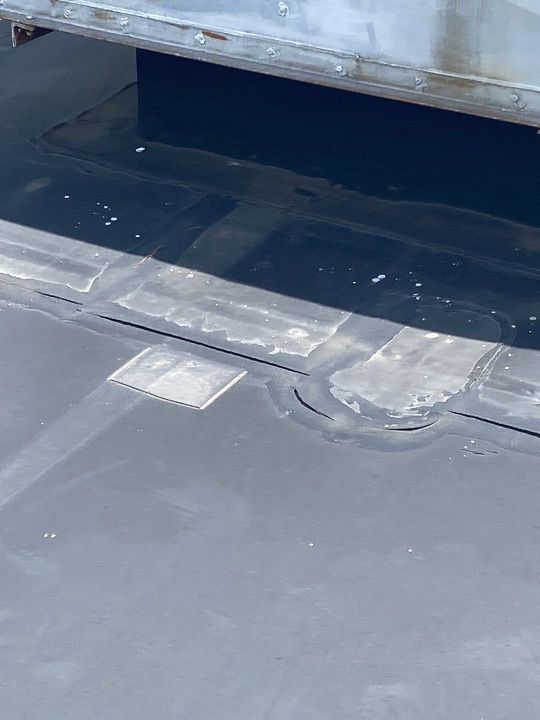
Prolonged weather exposure can erode the seams that connect roofing fabrics. Be especially vigilant around your roofing seams!
4. Increased Energy Bills:
A well-insulated roof contributes significantly to a building’s energy efficiency. If there’s a sudden, unexplained spike in heating or cooling costs, the roof’s insulating capabilities might be compromised. This can be due to moisture infiltration or damage to the roof membrane.
5. Structural Issues:
Sometimes, the signs are within the building:
- Sagging Roof Deck: A noticeable sag or depression in parts of the roof suggests structural damage.
- Interior Water Stains: While sometimes a result of minor leaks, recurring or spreading stains on walls or ceilings might mean larger roofing issues.
- Mold and Mildew: Persistent mold, especially in upper areas of the building, might result from roof leaks.
6. Outdated Roofing Technology:
Roofing technology and materials evolve. Older roofs might not benefit from advancements that offer better durability, energy efficiency, or resistance to environmental factors. If the roof has outdated technology or materials, preemptively replacing can be a strategic move.
7. Failing Seams
A common challenge with roofing systems is seam failure. For PVC or TPO roofing, the sections are joined using heat, effectively fusing them together. EPDM roofs use adhesive sealant tape for seam connection, while the once-popular modified bitumen method employed hot tar combined with an adherent material to secure the seams.
Regardless of your roofing type, issues with the seams could signal a need for roof replacement. Sometimes, incorrect installation leads to early seam troubles. However, prolonged exposure to weather conditions often wears down the seam bonds. Once this degradation occurs, it paves the way for moisture infiltration, making roof replacement indispensable. Always have a trustworthy roofing expert check your seams to prevent major complications.
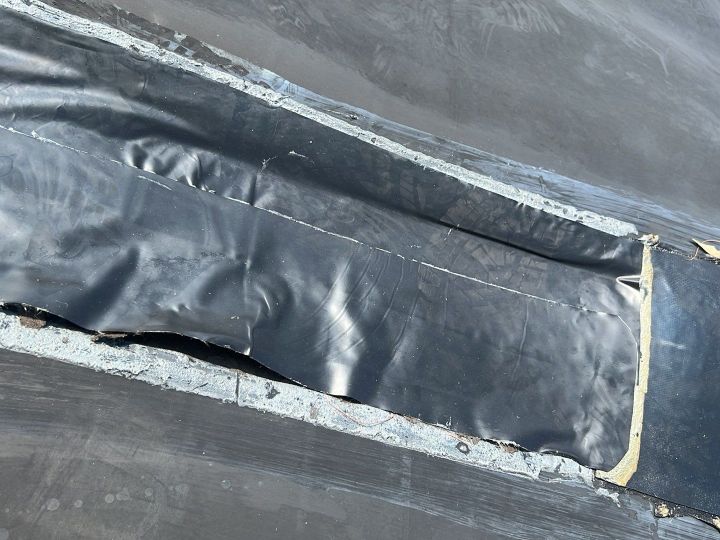
Another example of torn seams that eroded over time. Instances like this should be fixed ASAP
8. Economic Considerations:
At times, replacing a roof is more of an economic decision. Weigh the costs of frequent repairs against the cost of replacement. If the former is steadily climbing and promises to be a consistent drain on resources, investing in a new roof might be the wiser financial decision in the long run.
How can I Extend the Lifespan of my Commercial Roof?
The top strategy for extending your roof’s life involves consistent check-ups and upkeep. This approach is not only the most effective but also a cost-saving way to ensure your commercial roof stands the test of time. If neglected, a minor flaw or issue can balloon into a significant, cost-intensive problem, possibly necessitating a complete roof replacement. If you live in Pennsylvania, New Jersey, Maryland, or Delaware- and are in need of a commercial roof replacement, don’t hesitate to give us a call and we’ll thoroughly explain all of your options!
For preventive measures, enlist a certified and insured commercial roofing expert to inspect your building at least annually. Commercial roof service plans really are essential to maintaining a commercial flat roof properly. Trustworthy roofers will come equipped with a thorough checklist to confirm your roof’s condition.
Moreover, it’s wise to get your roof checked after intense storms or significant weather changes. Extreme weather conditions can often wreak havoc in a short span. If you’re seeking expert advice, reach out to our Lancaster roofing team here at J Smucker Contracting. We offer routine check-ups and maintenance schedules tailored to commercial structures of every scale. Get in touch now, and we’ll send over a skilled inspector to evaluate your site and offer a no-cost estimate for a customized annual inspection and upkeep package.

